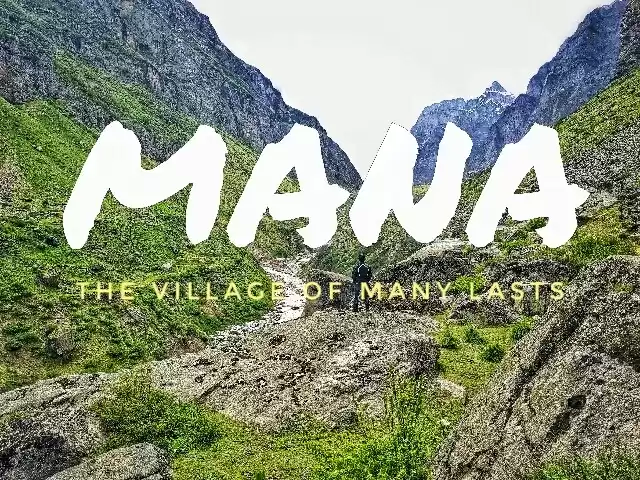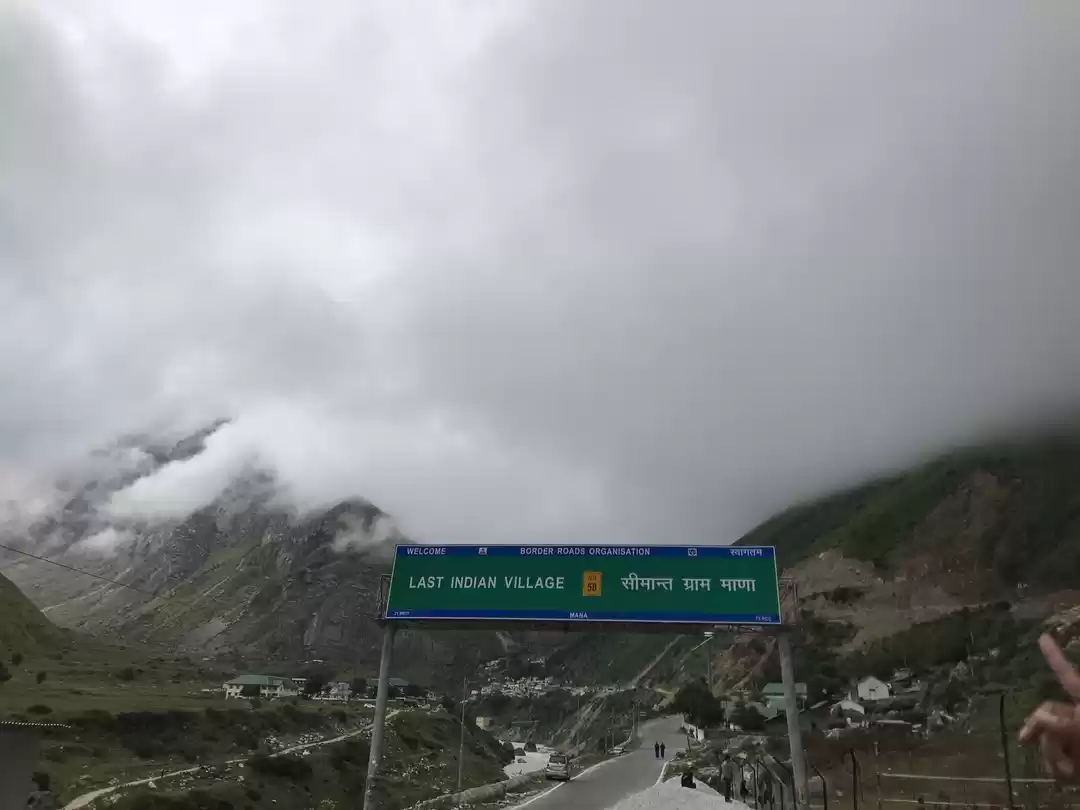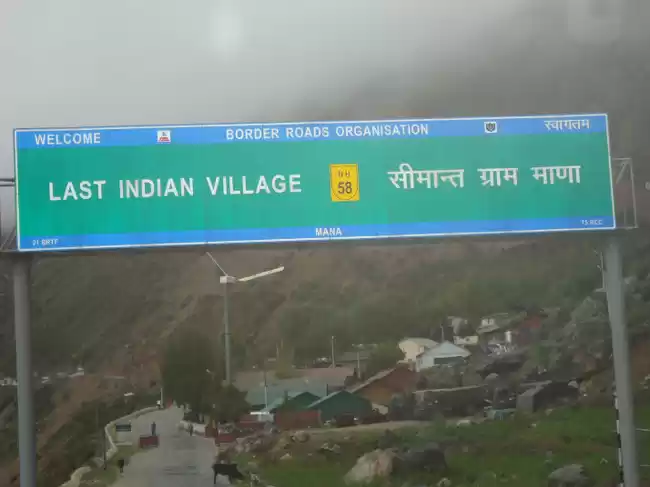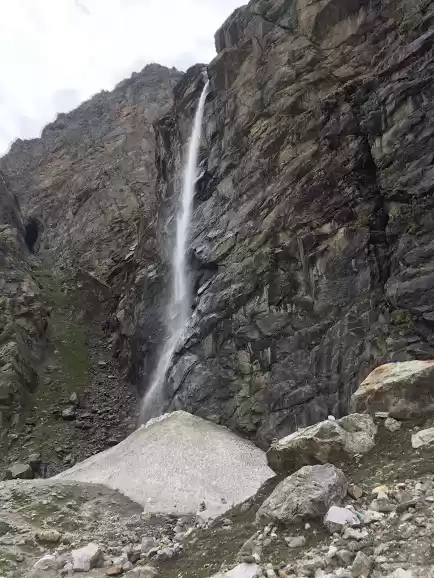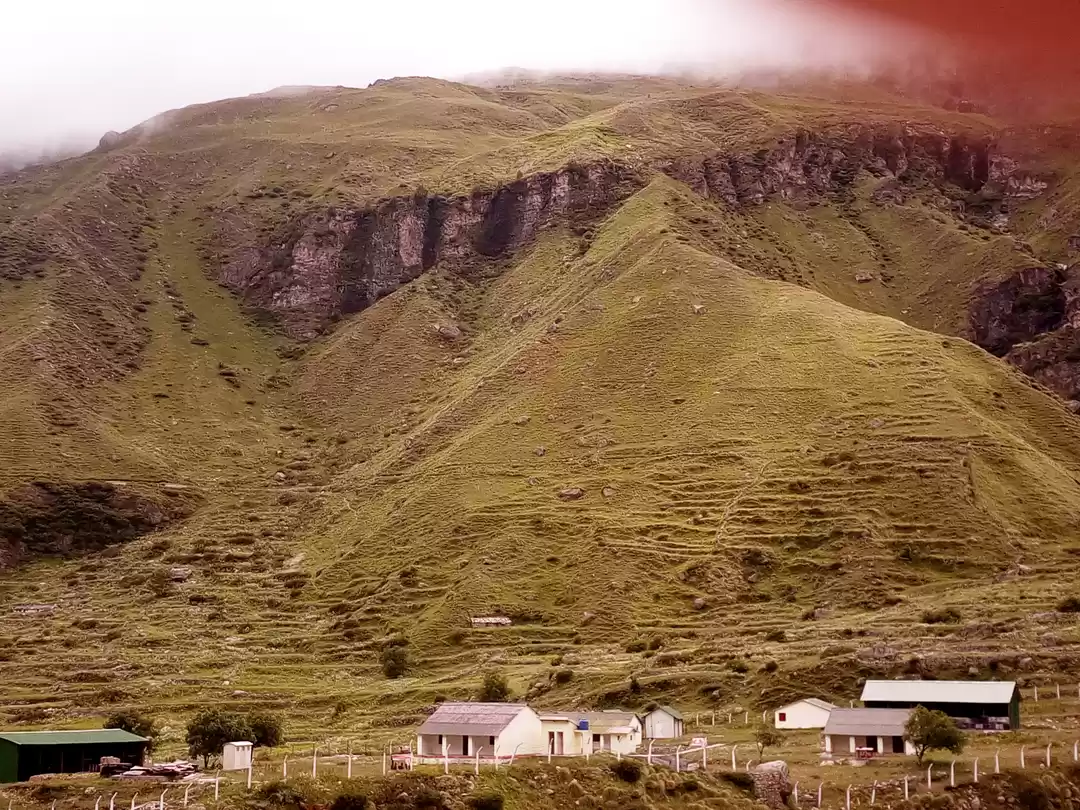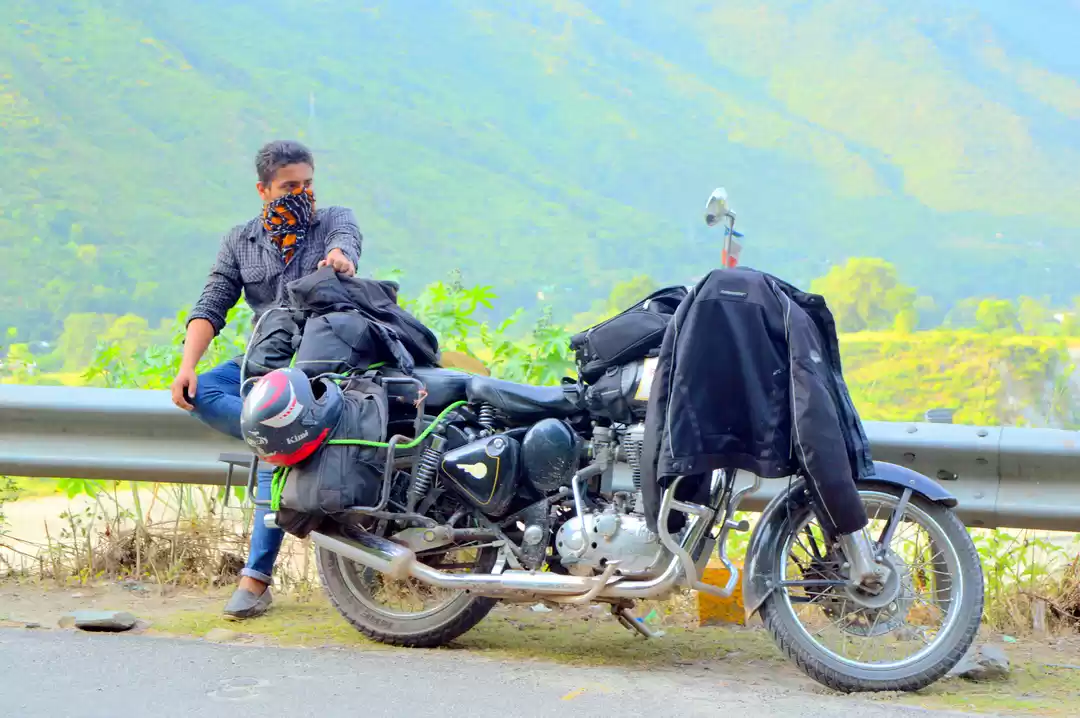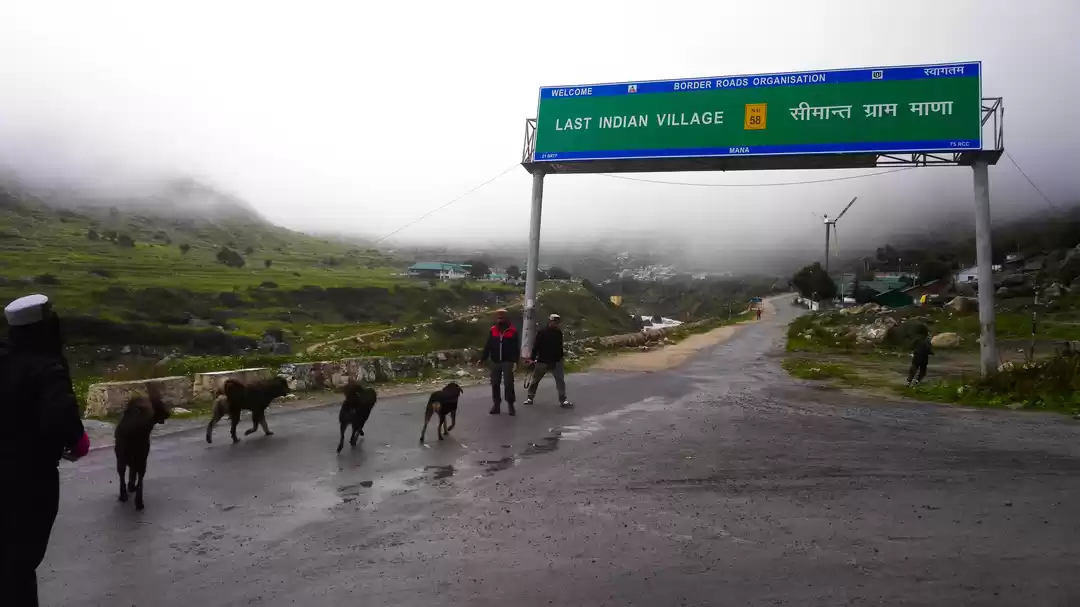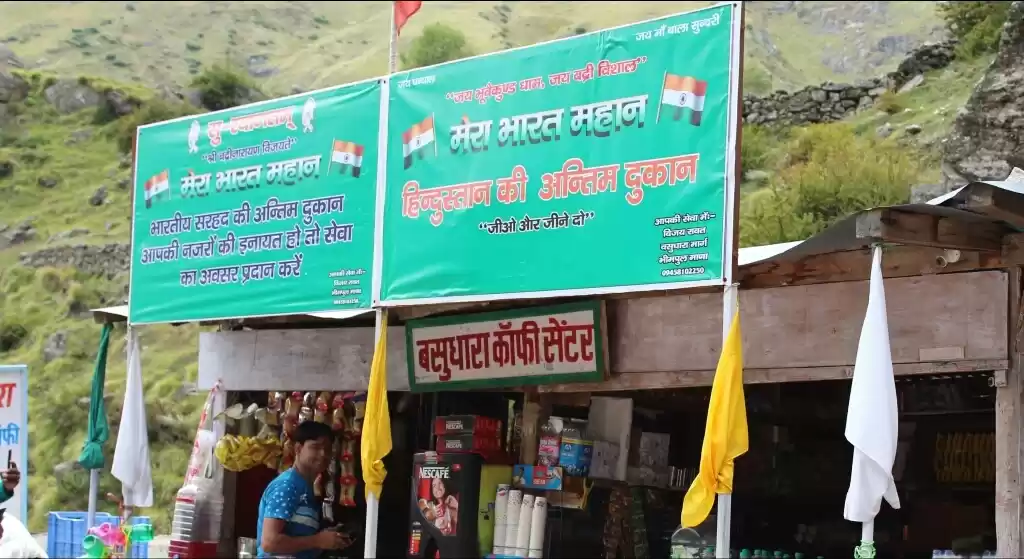




It is not easy to be left alone in India. Wherever you go, be it high up in the mountains, far away in the desert or remote shores; there are plenty of curious eyes tracking your movements. The only chance of solitude is to go as far as you can: Mana village is literally the farthest a traveler is allowed to go within the boundaries of India. It is a calm and tranquil spot before the onset of Tibet/China. This post is the story of the last village in India (Mana) located in Uttarakhand, 3118 meters above the sea level.
The story of Mana Village
1: The Mythical Past of Mana

Bheem Pull~Image Credit

Saraswati river merges with Alaknanda river a few meters from this point~Image Credit
The traces of Hindu mythology, Mahabharata, are visible in Mana. It is believed that Pandavas had to pass through this village on their journey to heaven. Bheem, the strongest of the five brothers, build a rock bridge in order to cross the Sarasvati river. Furthermore, a small cave named Vyas Guha is widely believed to be the place where sage Veda Vyasa resided and composed the whole Mahabharata.
2: The Village of Many Lasts
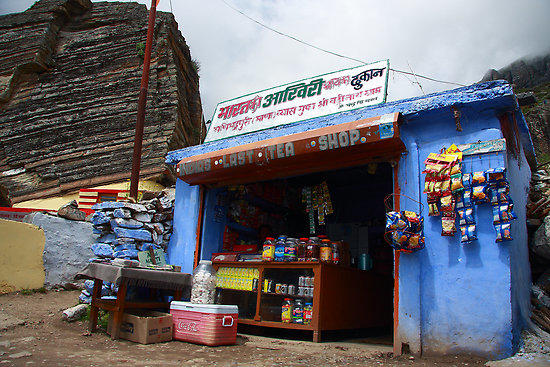
Many shop in Mana lay claim to be the last in India~Image Credit

A BRO post at the entrance of Mana~Image Credit
The claim to fame of many coffee & tea shops here is that they are the last on the Indian border. If you don't make a stop here; you will regret it for the rest of the journey.
3: The Mongol Connection
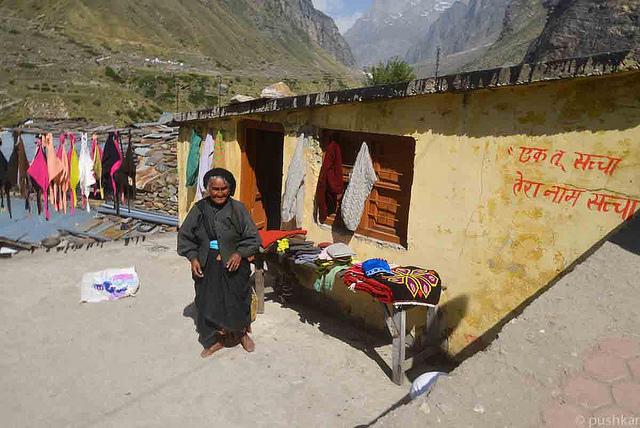
Locals live a migratory life~Pushkar V

Barfani Baba stays in a cave round the year~Gaurav Agarwal
The inhabitants trace their origin back to Mongol tribes and follow a migratory way of life. The residents are the last generation of the Bhotia community. The weather conditions become so hostile and inhospitable during the months of October-May that the residents move to lower areas of Chamouli which is 100 km away from Badrinath.
4: The Dwellings of Mana

Their rustic accommodations includes 1-2 rooms & wood carved windows~Abhishek
They dwell in stone cottages which are mud plastered and have slate tiled sloping roofs. The houses are built into the hillside and have a kitchen garden in the backyard. Part of their livelihood is to grow spinach, cauliflower and potato and sell this to hotels and guest houses in Badrinath. The Mana women are craftsmen par excellence. Their handcrafted shawls and carpets find many takers. They generally weave more than 10 woollen items such as Gudma, Thulma, Pankhi, Pattu, sweater, cap, muffler, scarf, carpet, Ashan and Pakhi.
5: The Potato Charm
Mana Village is famous for its potatoes. As soon as you enter the village; you will come across large potato sacks neatly arranged on street side ready for sale. The pahadi aloos are almost a quarter of a the size of the ones grown in the plains and pack a punch.
6: The End of the Road

A long shot of Mana village~Sandeep Shande
Once you reach the top of the hill at Mana, the air becomes thin and breathing takes a bit of an effort. The border road is visible at one side and the vast Himalayan expanse on the other. That is truly the end of the road.
One has to park vehicles at the village border and enter the village on foot. Once inside, the Himalayan surrounding and calmness will envelop your sense. Please share your thought and observations on this post about Mana Village below. Read more about India's stunning locations like Andaman & Nicobar Islands and Ghalib ki Haveli.
Frequent Searches Leading To This Page:-
mana village in april, about mana village, mana village height in feet
















